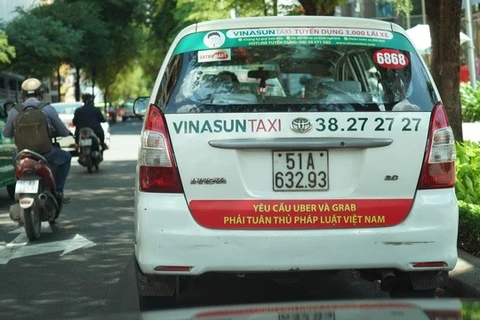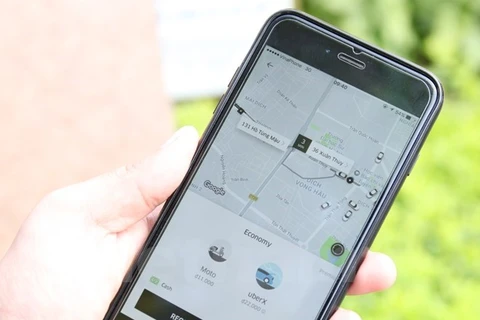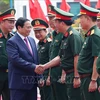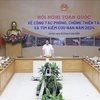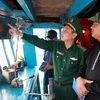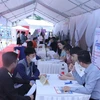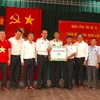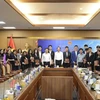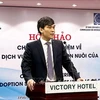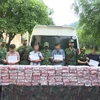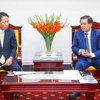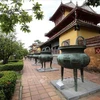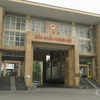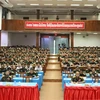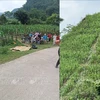Hanoi (VNA) - Many road users have raised their voices about a Hanoi ban prohibiting the use of taxis - including Grab and Uber - from using 13 inner-city streets. They claim it will do nothing to reduce the city’s traffic congestion.
The Department of Transport issued the ban on paid passenger cars during peak times in a bid to solve severe traffic chaos in those streets.
The ban took effect nearly a week ago. Accordingly, hire cars are not allowed into Hoang Hoa Tham, Mai Xuan Thuong, Giang Vo, Lang Ha, Le Van Luong, Truong Chinh, Kham Thien, Hang Bai, Phu Doan, Cau Giay, Xuan Thuy, Giai Phong and Chuong Duong Bridge from 6am to 9am and from 4.30pm to 7.30pm.
Warning signs have already been installed in those streets.
However, many drivers say the ban will not only fail to reduce the gridlock, but it likely to cause more trouble for drivers.
A Grab taxi driver called Hung said that most Grab and Uber drivers only worked part-time and used their cars as their own means of transport. Thus, it would be difficult for police to discover just who was a violator.
When approached by police, drivers turn off their "apps", or ask customers to walk through the banned areas or pretend to be the drivers’ relatives. This would free them from paying fines.
Hung said the ban would force all vehicles to take alternative routes, making journeys unnecessarily longer and even turning these "safe" routes into new gridlock areas.
A Uber taxi driver said the ban caused a little inconvenience for drivers picking up passengers, but there were many ways of avoiding being caught by authorised agencies.
He said he ignored the ban and still picked up or dropped off passengers in recent days.
“We only know the destination of passengers when we accept their trip. We can’t keep cancelling all trips through banned streets,” he said.
However, he added that he had not seen any violators being stopped and fined in the past several days.
Tran Van My, a Mai Linh taxi driver, said that he supported the ban if police could ensure all paid passenger cars were banned from those streets.
“Uber and Grab are not different from us. They carry passengers and contribute to traffic congestion. But they can freely pick up and drop passengers in the taxi banned areas.
“If the ban stops just taxis because we are easy targets, this is totally unfair,” he said.
Bui Danh Lien, acting vice-chairman of the Hanoi Transport Association, told the newspaper Lao Dong (Labour) that the ban for cars with fewer than nine seats on certain routes was made by the city authority’s management.
The association said the ban was missing the root of the problem. The basis of gridlocked streets is all about the big increase in vehicles and inadequate and ill-quality infrastructure, he said.
Vu Van Vien, director of the city’s Department of Transport, said that the move was intended to reduce traffic jams and environmental pollution - and had been approved by the city’s People’s Council.
Vien admitted that the ban could cause inconvenience for passengers who used transport services from Uber and Grab, but still said it would help reduce gridlock.
Police will stop and remind violating drivers until the ban take full effect.
Vien said the ban was not permanent, adding that it would be removed from routes where traffic jams were overcome and applied to streets where congestion was getting worse.
Vien also said it was important to be able to identify cars operating under transport contracts. The Ministry of Transport has worked on a draft decree, which stipulates that cars from Grab and Uber must display company logos on their front and back windows. This would help police tell the difference, he said. - VNA
VNA

